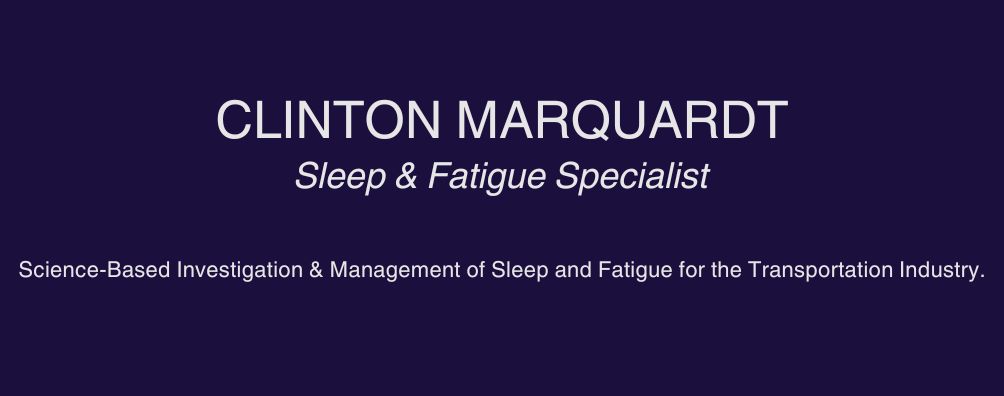For me, using caffeine as a fatigue prevention strategy or a fatigue countermeasure is a no-brainer. But for many people and organizations starting the journey into fatigue management, it takes a mental shift to see it the same as I do. I think part of this comes from the tight link between caffeine and coffee. Most people drink coffee for pleasure. So caffeine becomes synonymous with coffee. We experience the pleasure of coffee after a night of slumber or during those refreshing pauses during the work day we call Coffee Breaks. If caffeine is for pleasure, then it is hard to make the mental shift to seeing it as a fatigue prevention strategy or a fatigue countermeasure.
Fatigue Prevention Strategies: Actions you can take to reduce the chance of becoming fatigued in the future.
To use caffeine in fatigue management, all sources of caffeine, including coffee, have to be tightly controlled. This means dropping your pleasure dose to about 1 per day and reserving the rest for fatigue management. This will keep your neurochemistry sensitive to the alerting and performance enhancing effects of caffeine.
Fatigue Countermeasures: Actions you can take to reduce fatigue that you may already be experiencing even if you don’t feel obvious signs of fatigue (e.g., head nods).

Using caffeine strategically is not a new concept. I remember first reading the science behind it through the work of the NASA Ames Z-Team[1] in the early 1990’s. Although the Z-Team disbanded many years ago, they left behind a great legacy of work[2]. Through this work, I learned how to use caffeine during my long graveyard shifts at the sleep lab and to cram for an exam late into the night. I have continued to use caffeine strategically and I faithfully recommend using it this way to all my clients.
When incorporating caffeine into an organization’s fatigue prevention strategies and fatigue countermeasures, I always attach great importance on knowing the exact dose that is being consumed so that the alerting and performance enhancing effects are consistent. This is why I have been gravitating to suggesting the use of energy drinks[3], pre-workout supplements, caffeinated gum and Awake Chocolate. They all list their caffeine content on the wrappers and containers. For example, the Awake Caramel Chocolate Bite contains 50 mg of caffeine and gives me just enough boost to carry on safety critical tasks during the post lunch dip. Awake Chocolate also makes full chocolate bars and granola bars with caffeine levels that are closer to one full dose of caffeine which is usually considered to be 100 to 120 mg of caffeine. I recommend the full dose versions when the risk of fatigue is higher, like when you are entering the circadian trough in the middle of the night and cannot take a nap…sleeping is always the best fatigue management strategy.
If you are thinking of introducing caffeine into your arsenal of fatigue prevention strategies and fatigue countermeasures, be sure to start by reading one of the best papers out there on fatigue countermeasures written by Dr. John Caldwell and colleagues [4]. The paper, entitled Fatigue Countermeasures in Aviation, is still one of my go to papers and can be found here: https://www.asma.org/asma/media/asma/pdf-policy/2009/fatigue-counters.pdf
After reading Dr. Caldwell’s paper, check out my articles referring to caffeine:
1. Caffeine – Beware the Insidious Nature of Caffeine!
2. My Cat Went Crazy Last Night!: How not to manage your fatigue.
3. Sleep Inertia: How long does it take you to wake up really?
Then head on over to www.AwakeChocolate.com to pick up the yummiest fatigue fighter out there! If you would like to make a wholesale purchase for your team, the best bet would be to e-mail them at info@awakechocolate.com
Footnotes:
[1] The official name for the Z-Team was The NASA Ames Fatigue Countermeasures Group: https://www.nasa.gov/centers/ames/news/releases/2004/humanfactors/humanfactors.html. For an intro to their work, see Rosekind, M., Neri, D., Miller, D., Gregory, K., Webbon, L., Oyung, R. (1997). The NASA Ames Fatigue Countermeasures Program: The next generation.
[2] See for example: Co, E., Rosekind, M., Johnson, J., Weldon, K., Smith, R., Gregory, K., Miller, D., Gander, P., Lebacqz, J. (1994). Fatigue Countermeasures: Alertness Management in Flight Operations. Southern California Safety Institute Proceedings, Long Beach, 1994, 190-197.
[3] I don’t recommend energy drinks for pleasure, there are too many unknowns about the long term effects of all the ingredients within these beverages.
[4] Caldwell, J., Mallis, M., Caldwell, J.L., Paul, M., Miller, J., Neri, D. (2009). Fatigue countermeasures in aviation. Aviation, Space and Environmental Medicine, 80(1), 29-59.



